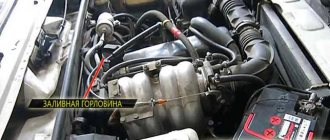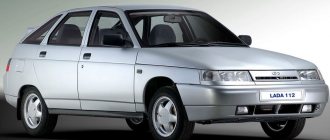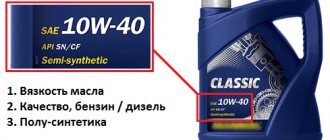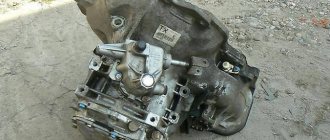With the onset of cold weather, many car owners are wondering whether they need to change their engine oil for the winter or leave everything as is until a scheduled replacement. Car manufacturers and service center employees, as a rule, advise using specially developed fluids that are most suitable for this difficult period for the car, even if there are still a couple of thousand kilometers left before the scheduled maintenance. This is primarily due to the fact that it is during the cold season that starting the engine is much more difficult, especially in diesel engines. Therefore, in order for the crankshaft to rotate freely in severe Russian frosts, it is very important to choose the right winter engine oil for your car.
Winter or all-season oil
Winter oil, as a rule, has low viscosity and high fluidity. Thanks to this, it is practically not susceptible to freezing at extremely low temperatures. The special properties of this oil contribute to the formation of a dense film, which provides continuous protection of internal combustion engine parts. On the other hand, winter lubricant is seriously inferior to summer oils in terms of density. In addition to 5W-30 and 5W-40, the category of all-season oils also includes lubricants with viscosities of 10W-30 and 10W-40, which are more suitable for older cars with worn-out engines. However, in most cases, 5W-30 and 5W-40 are suitable and are considered safer and can be used all year round.
Manufacturer's choice
The market for fuels and lubricants is simply replete with a variety of products, so it can sometimes be quite difficult to give preference to a particular company.
Let's look at some companies that have a good reputation and have been in this field for quite a long time.
The leaders include the products of the following companies:
Castrol is a high-quality lubricant that allows long-term protection of moving engine elements from wear and overheating;
Shell Helix - their products are rightfully considered one of the best, since their production is carried out using a unique technology. The quality of this lubricant, as well as its cost, is at a high level, and a large assortment allows you to select a fluid for any power unit;
Mobil - this brand can be found in any car store, as it is quite popular. All this is thanks to the high-quality composition of lubricants, which can significantly increase engine efficiency.
This is not a complete list of manufacturers that you should pay attention to when choosing winter oil for your engine.
Decoding 5W-30 and 5W-40
On the label of the oil package you can see the SAE viscosity designation, consisting of several numbers separated by a hyphen and the letter W, which indicates adaptation to winter conditions. This means that 5W-30 and 5W-40 can be used at low temperatures. To decipher these designations, you need to pay attention to the degree of viscosity at low and high temperatures - in this case it is 5W and 30 (40), respectively. It turns out that oil with a low-temperature viscosity of 5W can theoretically be used at a temperature of minus 30 degrees.
What to do before the cold weather sets in
The most important thing is to replace the old lubricant with a new one to be completely sure that it contains all the necessary performance qualities. Before adding new fluid, wash the power unit with a special detergent.
In addition, ensure that all the main components of the car that are responsible for normal starting are in proper condition.
Such systems include the generator, starter and fuel supply system.
In general, conduct a full check of your car and prepare it for the winter period.
Why 5W-40 is better than 5W-30 in practice
For example, in hot summers in engines with 5W-40 oil, a thick layer of film forms on the parts, preventing dry friction of the internal combustion engine mechanisms. 5W-30 oil, in turn, is thinner in consistency and therefore spreads faster over the engine, and, unlike 5W-40, is not able to adhere to working engine elements for a long time. In this regard, 5W-40 looks better. Among the features of this oil, one can note a thicker protective film and rapid distribution over the surface of the internal combustion engine, which is especially important during startup. Another advantage of 5W-40 is engine protection at temperatures up to plus 40 degrees.
Automotive manufacturers' requirements for lubricant viscosity
Viscosity is the main indicator when choosing a motor lubricant. Based on this indicator, you can always determine for yourself which oil to fill in in winter.
As you know, during the operation of the power unit, all its moving elements interact with each other. Due to heavy loads, their natural wear occurs, as well as minor deformation.
Thanks to the oil used, these processes are significantly reduced, since an oily protective film is formed on all surfaces of the parts. It also fills all the gaps between mechanical elements, but does not create significant resistance during their movement. The thickness of such a protective film directly depends on the viscosity of the oil.
You can find out what kind of lubrication your car’s engine requires from the technical documentation for the vehicle. Therefore, do not be lazy before purchasing a lubricant, read the recommendations of the manufacturer of your car.
Do not forget that oil with too high a viscosity will create difficulty turning the crankshaft when starting the engine in winter. In addition, due to its thickness, the lubricant will not be able to instantly cover all rotating parts with a protective film, which will lead to their faster wear.
But the lubricant used should not be too fluid, since it will not linger on the surface of engine parts and will drain from them, ceasing to perform a protective function.
Factors influencing oil selection
Vehicle age and mileage
As a rule, for modern engines with low mileage it is recommended to fill in 5W-30. This oil is also suitable for cars over 5 years old and with a mileage of 70 thousand km. When reaching 100 thousand km, engine parts are subject to increased wear, which means an increase in the gaps between them. In this case, it is recommended to use a more viscous 5W-40 oil, which lasts longer on the surface of the engine elements, which leads to an increase in the service life of the internal combustion engine.
The nature of the motor
If, after changing the oil, the engine starts with difficulty and other problems appear (noises, vibrations, the engine begins to shake and make extraneous noise), then you need to select oil of a different brand or viscosity
Temperature
As is known, the climatic characteristics of a particular region have a significant impact on engine operation and the condition of the engine oil. For winter conditions, you can choose 5W-30 or 5W-40, since these are all-season motor oils. It is important to keep in mind that 5W-40 is more suitable for severe engine overheating, while when using 5W-30 in such conditions, there is a high probability of depletion of the low-viscosity film and leaks through gaskets and other seals.
Synthetic or semi-synthetic
Oils with viscosity 5W-30 and 5W-40 mostly have a synthetic base, but in rare cases cheaper semi-synthetics are also found. It has optimal viscosity for all-season use, but preferably without sudden temperature changes. Based on this, the choice of semi-synthetics must be approached with caution, whereas when choosing 5W-30 or 5W-40 there should be no problems at all.
How to properly prepare your car for winter?
To protect yourself from unpleasant surprises, in addition to choosing a suitable lubricant, you must do pre-winter maintenance. What does it include?
First of all, check and, if necessary, eliminate problems in the engine or injection system. Be sure to check the condition of the generator, battery and starter, which play a key role in starting the engine.
It is also necessary to check all the vehicle's technical fluids. If they have expired or are about to expire, replace them before frost sets in. This applies to both engine and transmission oils, as well as brake, coolant and power steering fluids.
NOTE!
Expired technical fluids lose their working properties, including non-freezing properties - they can become freezing! The consequence may be a rupture or depressurization of the cooling radiator, engine overhaul or, in the worst case, its replacement.
Compatible with 5W-30 and 5W-40. Is it possible to mix?
- 5W-30 and 5W-40 are theoretically compatible oils, but it is not recommended to mix them in the winter, as this can cause a change in the viscosity of fuel and lubricants and cause engine failure.
- The possibility of using 5W-30 and 5W-40 together depends on the factory recommendations. If the manufacturer officially allows the operation of an internal combustion engine with both oils, then nothing bad will happen to the engine. In winter, the only nuance when mixing is the change in viscosity, which will be between 5W-30 and 5W-40. The remaining parameters will remain unchanged, given the same low-temperature performance (5W).
Mileage and engine condition
The condition of the engine can also tell you what kind of engine oil should be poured into it for the winter. New cars that have just come off the assembly line need a special lubricant that will allow all working parts to “grind in” as efficiently as possible.
Such a liquid cannot boast of a good quality composition, but it helps to “tune” the operating rhythm of the engine. That is why manufacturers recommend maintaining a careful driving style after 3-5 thousand kilometers.
The first and subsequent changes of oil fluids must comply with the requirements of the machine manual: it clearly states the brand of winter and summer oil, according to the SAE classification. Before the first hundred thousand kilometers, the viscosity of the motor oil cannot be changed, otherwise the service life of the engine may be significantly reduced.
As the mileage increases, the engine's requirements for consumable density change. Since no oil base can completely eliminate the destructive force of friction, over time the gaps between the rubbing elements increase, so for effective operation a thicker lubricant is needed.
Two basic rules will tell you how to choose the right fuels and lubricants for winter:
- For mileage over 100 thousand km, it is recommended to fill in 5W40 lubricant in the summer season, and 5W30 or 10W in winter
- When driving over 250 thousand km in the summer season, it is recommended to use 5W50, in the winter - 5W40 or 10W
Lab tests
Using the example of research results on 5W-30 and 5W-40 oils from one of the popular Russian brands, we can compare their main characteristics in detail:
1. Kinematic viscosity at 40 g. (sq. mm/s):
- 5W-30 – 55.98
- 5W-40 – 79.21
2. Kinematic viscosity at 100 g. (sq. mm/s):
- 5W-30 – 10.13
- 5W-40 – 13.37
3. Pour point at minus 44 degrees:
5W-30 and 5W-40 – minus 44 g.
4.Flash point:
- 5W-30 – 232 g.
- 5W-40 – 235 gr.
5. Dynamic viscosity of CSS at minus 30 g:
- 5W-30 – 4040 units.
- 5W-40 – 5490 units.
Types of liquid by chemical composition
Initially, only mineral motor vehicles were intended for transport. As the name suggests, “mineral” means that the oil was made from natural ingredients, i.e. petroleum. However, mineral liquid has a significant drawback: it is not suitable for winter use, especially in those regions where the air temperature rarely rises above -12 degrees Celsius. In such cases, the oil simply freezes.
The next option is a synthetic motor vehicle , which was created using the synthesis of molecules. The characteristics of such oil are more or less equal when the temperature changes. There is also semi-synthetic oil - natural ingredients are combined with artificially created compounds.
Each type has advantages and disadvantages. For example, although mineral oil is not suitable at sub-zero temperatures, it cleans the engine of soot and sediment, slowly removing them along with exhaust. Semi-synthetics are resistant to temperature changes, but they cannot be considered as a winter option, because the low temperature threshold is too high.
Synthetic oil is highly popular due to the fact that it is designed for a wide variety of weather conditions. In addition, it does not lose its qualities when the engine heats up or cools down, adjusting to the temperature. If previously there were many low-quality synthetic fluids that covered the inside with sediment and soot, now everything is different. High-quality “chemistry” allows you to get rid of debris, preventing clogging of oil channels and filters.
If it is not known what kind of liquid was poured into the engine and how long the car drove on it, then you should first fill in the cleaning agent, and then new oil, changing it for a while more often than the manufacturer recommends.
API tagging
API is an American standard that allows you to determine the compatibility of motor oil depending on the type of engine. The following letter designations are used for this:
For gasoline engines – SJ, SL, SM, SN For diesel engines – CH, CH-4, CI, CI-4, CJ, CJ-4
For modern gasoline cars, you should choose oil with API-SM or SN approval, while for diesel engines, API CJ or CJ-4 is recommended. For older cars, it is necessary to select oil with the API marking, which is closer to the beginning of the Latin alphabet. The same applies to diesel cars, and new heavy fuel engines run on oil with the latest CJ and CJ-4 approvals.
Designations of gear oils for manual transmissions
Here the markings are not as “branched” as for motor fluids, but they also require understanding. If we take the most common SAE classification in Russia, there are nine categories of materials poured into manual transmissions. A total of 5 summer and 9 winter options. But in reality, car owners prefer to use “all-season” vehicles. According to API, oils are marked with a combination of letters GL. Next comes the number from one to five. The larger it is, the more severe conditions the power unit can operate in.
ACEA marking
The ACEA standard classifies oil for each type of internal combustion engine and also determines the fluidity of the lubricant. As a rule, the higher the digital letter index, the better the quality of the oil. Today the following ACEA values are relevant:
- A/B – for gasoline and diesel engines of passenger cars. For modern engines it is better to choose A3/B4 or A5/B5
- C – for gasoline engines, as well as turbodiesels with a high degree of boost, including diesel engines with catalysts. Has the following designations: C1-04, C2-04, C3-04.
Preparing the machine for winter operation
Before changing the oil to “cold” oil, make sure that the car is ready to take on increased winter loads. This point is especially relevant for cars with a diesel engine. The first thing to check is the battery and starter. If the battery is more than 3 years old, then problems are possible: and in winter they will double. The starter should also turn well. It happens that the bushings in it are worn out and it “takes on” a lot. As a result, even with a new battery and winter oil, the crankshaft will turn slowly: starting may become impossible.
An important point: winter motor fluid must be filled before the onset of cold weather. Changing the oil is a kind of “stress” for the engine, so it must “get used” to the innovation.
ILSAC marking
ILSAC is a standard developed in collaboration with Japanese and American automobile manufacturers. This standard is in many ways similar to the API and provides for five quality categories, but we will focus on the most relevant of them:
- GF-4 - complies with API SM and is an energy-saving oil that is resistant to oxidative and corrosive processes. This lubricant has better cleaning properties compared to previous categories (GF-1, GF-2 and GF-3)
- GF-5 - complies with API SN and is suitable for the most modern engines, including highly accelerated turbo engines. One of the main indicators of this oil is the extended service interval.
Features of automatic transmission oil (ATF)
Most drivers, having successfully started the engine in early frost, do not think at all about the state of the “health” of the automatic transmission. But in vain! It is in cold weather that this unit most often fails. There are only two reasons:
- excessively low temperature and inappropriate oil;
- slipping on ice when leaving a place.
What happens to the automatic transmission? During operation, contaminants accumulate in the box filter. After starting the engine, it warms up successfully, which cannot be said about the “automatic”: the lubricant thickened overnight, the filter froze. As a result, oil starvation begins, lasting several minutes. When leaving a place, the automatic transmission switches on gears 2 and 3, while the pressure in the unit is insufficient, which causes the friction linings on the discs to burn. What to do?
Rules for operating automatic transmissions in winter
Start the engine and warm it up to operating temperature. Further actions:
- depress the brake pedal;
- move the automatic lever to different positions, holding each of them for 8-10 seconds;
- if the engine stalls, start it and warm it up better;
- if a slight vibration occurs, do not panic - this is normal;
- The duration of the procedure is 6-8 minutes at an ambient temperature of at least minus 20C.
You need to start moving very smoothly: squeeze the gas no more than a third of the free stroke. Move 300 meters. During this period, the oil will make several “turns” and, having warmed up, will flow to the gearshift clutches. The situation will be much simpler if your car has a special button for operating the automatic transmission in cold weather. It is usually located next to the main lever and is designated Winter, W or Snow. As soon as the program is activated, slipping will be eliminated; all transitions to higher speed will occur at minimum speed. In this case, the main load will fall on the torque converter. But do not forget to turn off the program as it gets warmer, otherwise the automatic transmission will overheat.
Some caveats. When driving on uneven surfaces, do not press on the gas, especially where there is ice. If there is slippage, the gearbox will engage in a higher gear, and if it hits the asphalt, it will engage in a lower gear. Such a constant sharp change in driving mode (which is especially typical for driving around the city) will clearly not add resource to the box.
The best winter oil 5W-30
Motul 8100 X-Clean FE 5W-30
104777 – 5000 RUR for 5 l
Characteristics:
- Type – synthetic
- Viscosity SAE – 5w-30
- API approval – SN, CF
- ACEA approval – C3, C2
- Purpose – gasoline, diesel, gas, biofuel
- Viscosity index – 163
- Kinematic viscosity at 40/100 g. – 72.9/12.1
- Density at 15 g. – 0.870
- Pour/flash point – minus 33/226 degrees.
- Total alkaline index – 7.1
- The share of sulfated ash is 0.77
Motul 8100 X-Clean FE 5W-30 is a high-tech synthetic with high protective properties. The oil contains powerful, stable and long-lasting additives that contribute to fuel efficiency and environmental friendliness of the engine. In addition, it provides effective lubrication of all contacting surfaces that are most susceptible to dry friction, overheating and increased wear. Motul 8100 X-Clean FE 5W-30 synthetic is suitable for modern gasoline and diesel engines, including turbo and direct injection engines.
What oil to fill in a diesel engine in winter
For diesel engines, all the arguments described above are also valid. First of all, it is necessary to focus on the value of low-temperature viscosity and the manufacturer’s recommendations. However, it is better not to use multi-grade oil for diesel engines . The fact is that such engines need more protection from the lubricant, and the latter “aging” much faster. Therefore, selection based on viscosity and other characteristics (in particular, car manufacturer standards and tolerances) is more critical for them.
Diesel engine oil
Motor oils for diesel engines have strong antioxidant and lubricating properties. The characteristics and tolerances of turbodiesel oil are even stricter... Read more
On some vehicles, the oil dipstick is marked with the oil used in the engine.
So, according to the SAE standard for diesel engines, everything is similar to gasoline engines. That is, winter oil must be selected according to viscosity , in this case low-temperature. In accordance with the technical characteristics and reviews of car owners of cars with diesel engines, the following brands of motor oils are a good option for the winter.
| Name | Characteristics | Price at the beginning of 2022 | Description |
| Motul 4100 Turbolight 10W-40 | ACEA A3/B4; API SL/CF. Approvals - VW 505.00; MB 229.1 | 500 rubles per 1 liter | Universal oil, suitable for cars and jeeps |
| Mobil Delvac 5W-40 | API CI-4 / CH-4 / CG-4 / CF-4 / CF / SL / SJ–ACEA E5 / E4 / E3. Approvals - Caterpillar ECF-1; Cummins CES 20072 / 20071; DAF Extended Drain; DDC (4 cycles) 7SE270; Global DHD-1; JASO DH-1; Renault RXD. | 2000 rubles for 4 liters | Universal lubricant that can be used in passenger cars (including at high loads and speeds) and in special equipment |
| Mannol Diesel Extra 10w40 | API CH-4/SL;ACEA B3/A3;VW 505.00/502.00. | 900 rubles for 5 liters | For passenger cars |
| ZIC X5000 10w40 | ACEA E7, A3/B4API CI-4/SL; MB-Approval 228.3MAN 3275Volvo VDS-3Cummins 20072, 20077MACK EO-M Plus | 250 rubles per 1 liter | Universal oil that can be used in any technique |
| Castrol Magnatec 5W-40 | ACEA A3/B3, A3/B4 API SN/CF BMW Longlife-01 MB-Approval 229.3 Renault RN 0700 / RN 0710 VW 502 00 / 505 00 | 270 rubles per 1 liter | Universal oil for cars and trucks |
Rating of oils for diesel engines in winter
It is also necessary to remember that most commercially available motor oils are universal, that is, those that can be used in both gasoline and diesel engines. Therefore, when purchasing, you first need to pay attention to the characteristics indicated on the canister, while knowing the tolerances and requirements of the manufacturer of your car.
Conclusion
The two main factors on the basis of which you should choose one or another oil for gasoline or diesel engines in winter are the requirements of the car manufacturer, as well as low-temperature viscosity . And this, in turn, must be taken into account based on the climatic conditions of residence, in particular, how low the temperature drops in winter. And of course, don’t forget about permissions. If the selected oil meets all the listed parameters, you can safely buy it. As for a specific manufacturer, it is impossible to give definite recommendations. Currently, most of the world's leading brands produce products of approximately the same quality and meeting the same standards. Therefore, pricing policy and marketing come to the fore. If you don’t want to overpay, then on the market you can easily find a decent brand under which oil of quite acceptable quality is sold.
Conclusion
If the car is new or has low mileage, then in harsh winters it is better to use 5W-30 synthetic oil, and for moderately cold climates, 5W-40 synthetic oil is better. In principle, such oils may be suitable for old used cars, but in this case, you first need to make sure that the engine does not have age-related problems (microcracks, leaks, scuffing, etc.). An alternative option is inexpensive semi-synthetic oil, which has a fairly high-quality composition that matches its price. However, semi-synthetics are more suitable for used cars.
Before the start of the cold season
It is much easier to use oils intended for all-season use, because they save the car owner from unnecessary headaches. But what if you just bought a car and don't know what kind of fluid is in it?
In this case, it is necessary to change the fuel and lubricants, and changing the engine oil should include its mandatory flushing. The previous owner may tell you that he poured high-quality fresh oil under the hood, but it’s not worth the risk. As a rule, before getting rid of an old car, people repair it not conscientiously, but within their means.
If the purchase was made before the start of the winter season, you should not neglect maintenance. It is possible that the car is filled with summer fluid, which will not allow it to be used in low-temperature conditions.
Preparing a car for winter is an important procedure, the observance of which will extend the life of the entire car. And you shouldn’t limit yourself to replacing the oil fluid. Not only car oil affects engine starting in winter.
Types of oils: mineral water, semi-synthetic and synthetic
According to the classification of the American Petroleum Institute API, all base oils are divided into five groups, of which the first three are obtained directly from oil and are called mineral, and the remaining two are synthetic, produced using organic synthesis. Hence the name.
On sale you can find compounds based on mineral and synthetic bases, as well as their mixtures, which are called semi-synthetics: they are the most popular and are suitable for most modern cars, while being cheaper than synthetic ones and significantly superior to mineral ones in most respects.
Gasoline engines
Each API classification should be considered in more detail. The petrol table is designated by the letters SA to SN. There are small compatibility tolerances: each subsequent class can be combined with the previous one; the reverse sequence is extremely undesirable.
| API class | Status | Engine compatibility |
| S.M. | Valid | It was introduced in 2004 and is perfectly suitable for all modern engines, including turbo units. |
| SL | Valid | Used since 2001, has energy saving features, |
| S.J. | Valid | It has been operating since 1996 and has 2 subclasses; 5 years after its introduction it was transferred to the energy-saving class. |
| SH | Outdated | The class was introduced in 1992, after which it was additionally certified as energy saving |
| S.G. | Outdated | Introduced into circulation in 1988, compatible with engines manufactured before 1993. It has good anti-wear qualities. Suitable for older engines better than new oils. |
| SF | Outdated | Applicable to engines manufactured before 1988. It has the best ratio of lubricating properties for engines operating on a two-stroke cycle. |
| S.E. | Outdated | High-quality oil for use with engines operating under high load conditions. Used for units manufactured before 1980. |
| SD | Outdated | Suitable for high-performance engines produced from 1967 to 1971. |
| S.C. | Outdated | Well suited for engines with high loads without boost. The class was used for cars manufactured before 1967. |
| S.B. | Outdated | The class is intended for motors operating with medium load. Use only as directed by the unit manufacturer. |
| S.A. | Outdated | Designed for low load engines. Also used as directed. |
You may also be interested in: How to choose the best battery for your car
Diesel engines
The classification of diesel oils allows you to accurately determine consumables by fuel type.
According to the API, the designation begins with the letter C:
- SA, SV, SS, CD, CE - obsolete.
- CF - suitable for engines manufactured after 1990 with indirect injection. This oil has additives to reduce carbon deposits, oxidation and corrosion.
- CG - for engines since 1995 with increased loads, the class prevents the appearance of soot, foam, and oxidation.
- CH - used for engines manufactured after 1998. Has the same characteristics as previous classes. Additionally meets the requirements of exhaust gas toxicity standards.
- CI is the last class accepted in 2002. The oil helps get rid of soot and soot and has high fluidity. The best product for the newest engines.
Before adding oil in winter, you need to make sure that the vehicle is ready for high loads and low temperatures. This is especially true for those cars that run on diesel fuel. The battery and starter must be in working order. If there are problems with the battery in the warm season, then in winter they will appear in an increased size.
In addition to engine oil, you should think about lubricants in other parts of the car. It is necessary to replace antifreeze and windshield washer fluid with winter versions.











